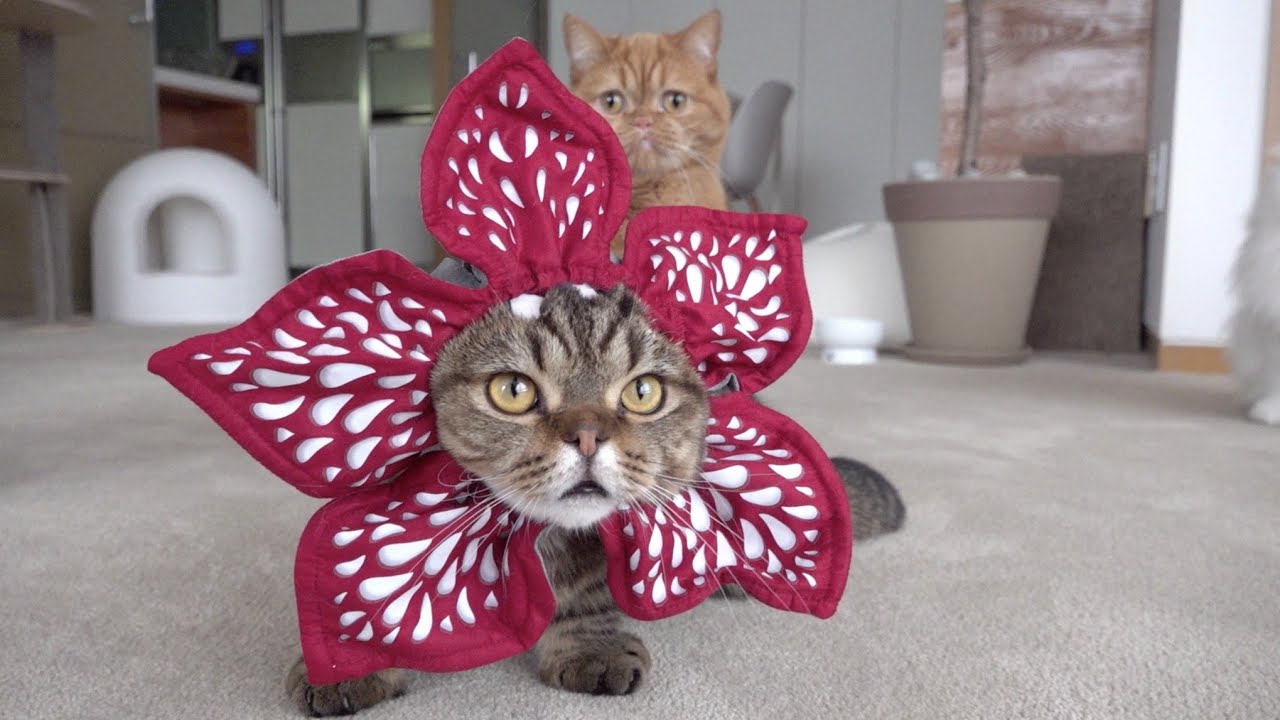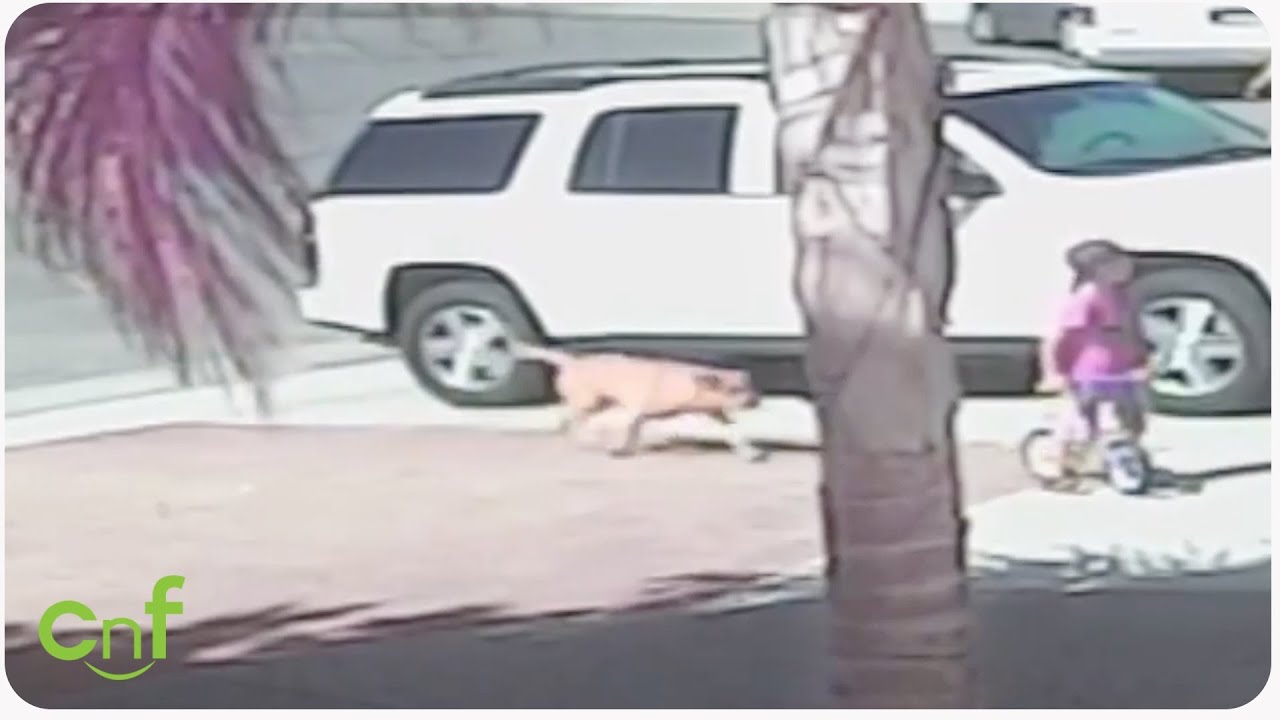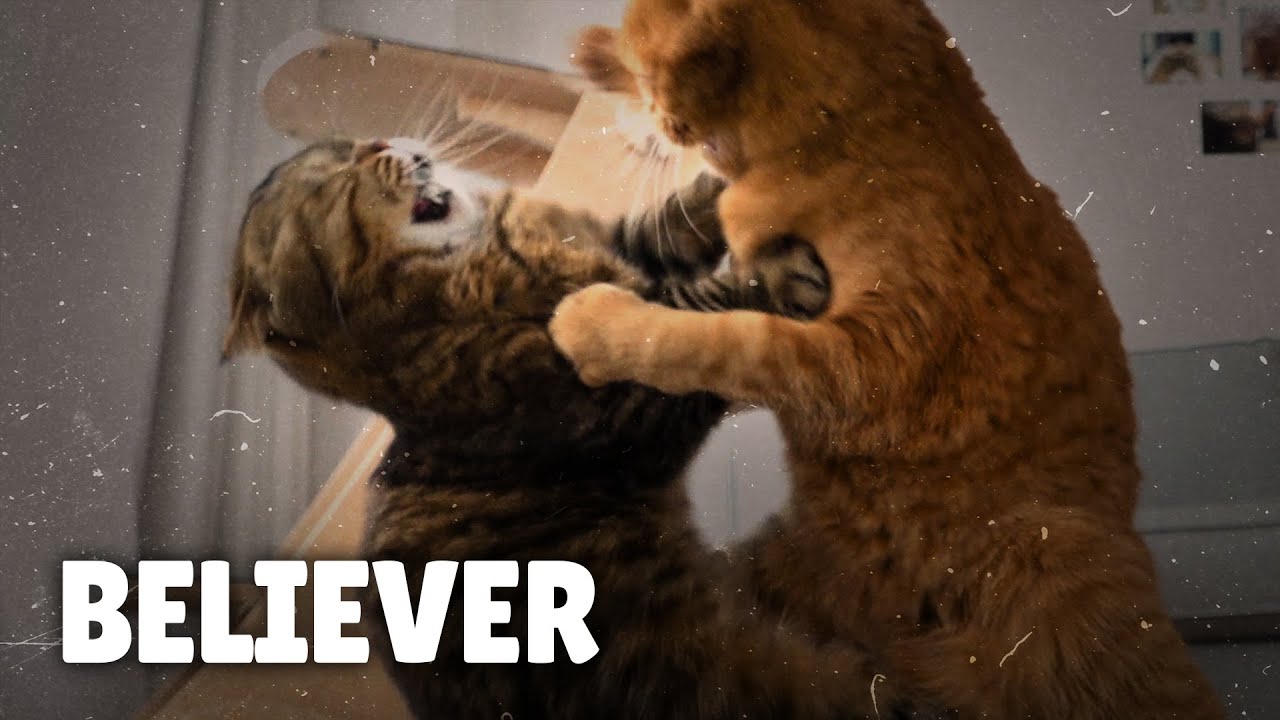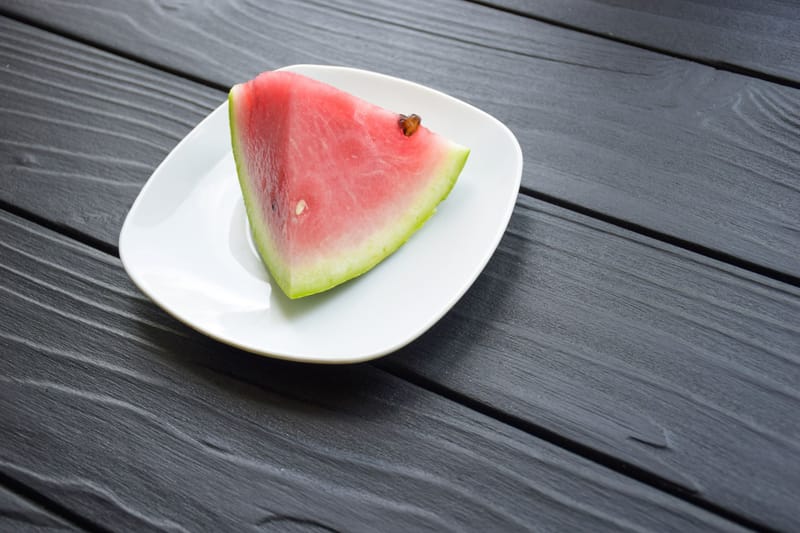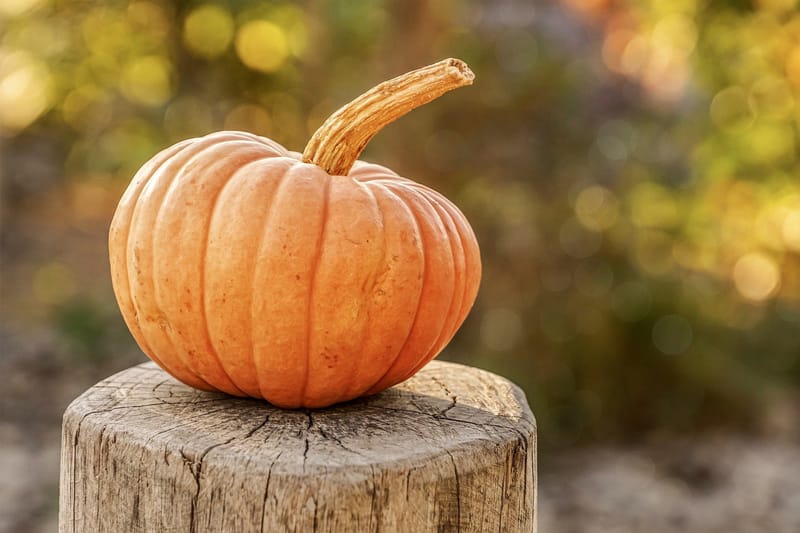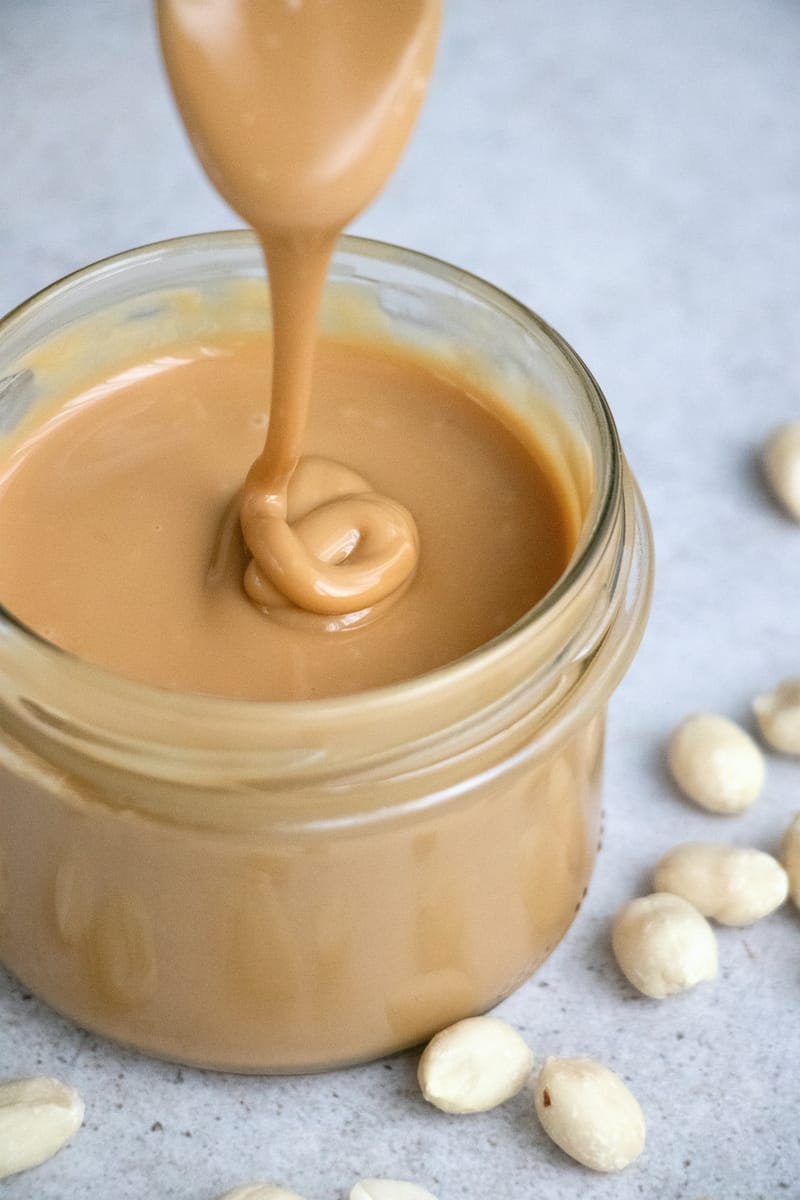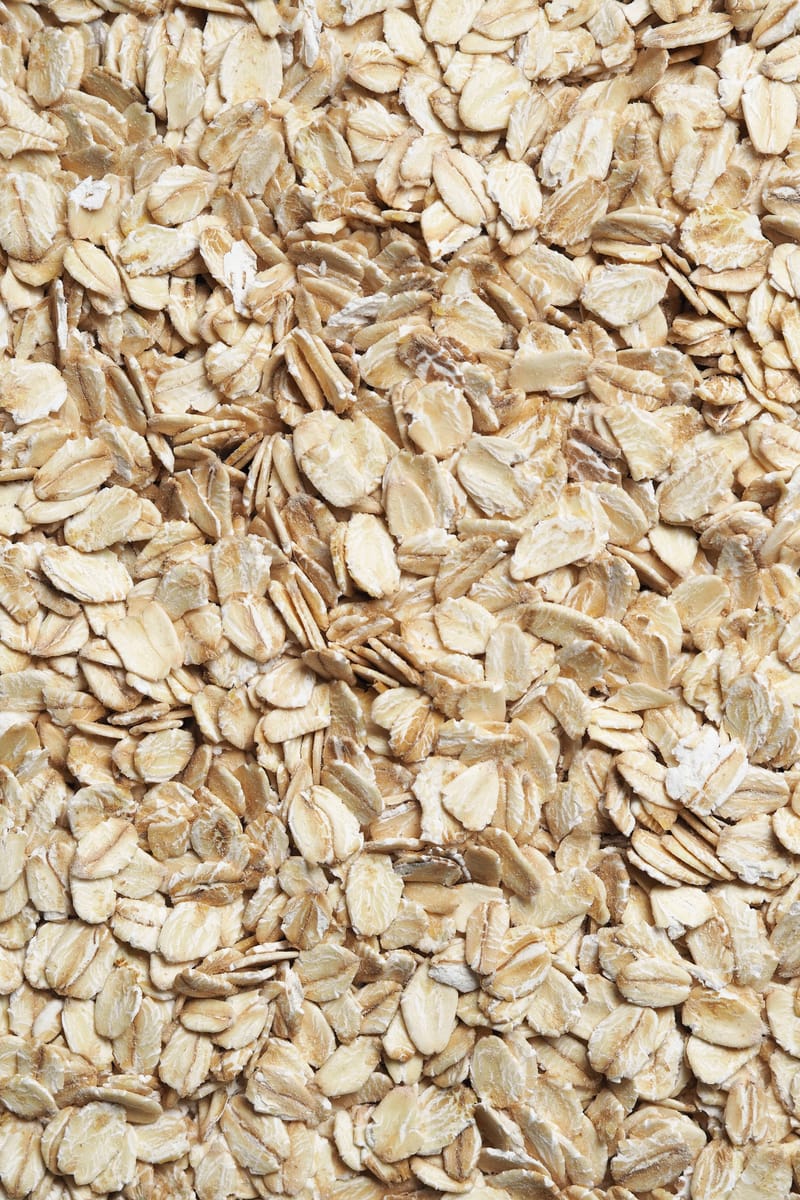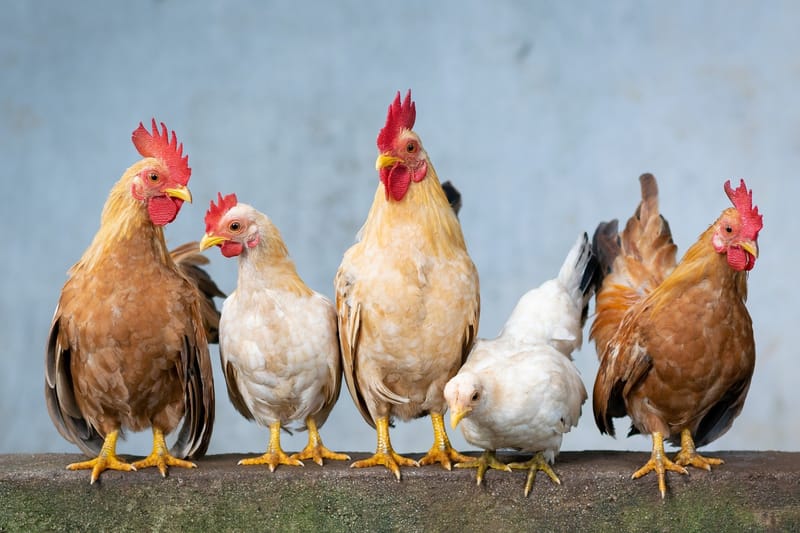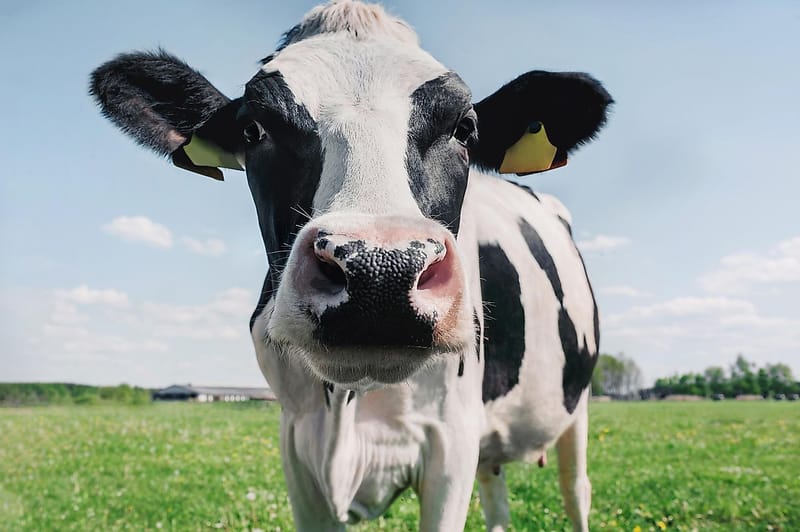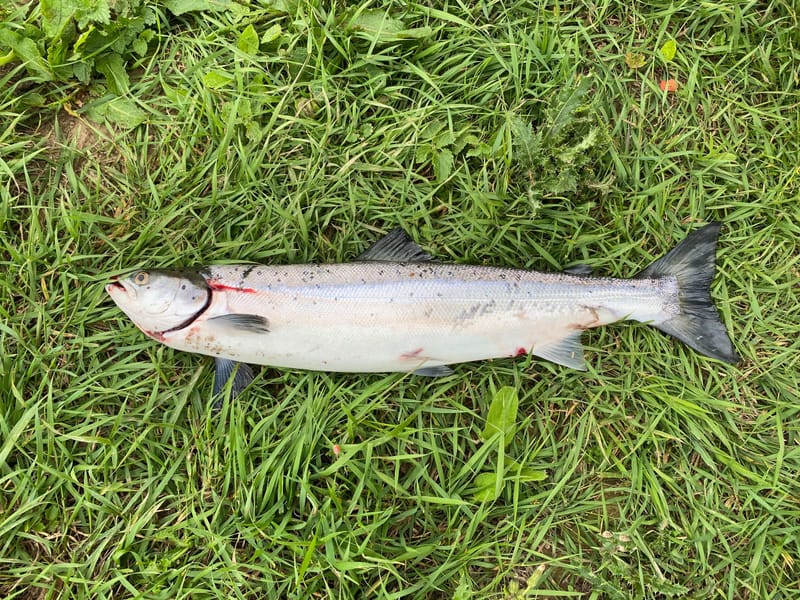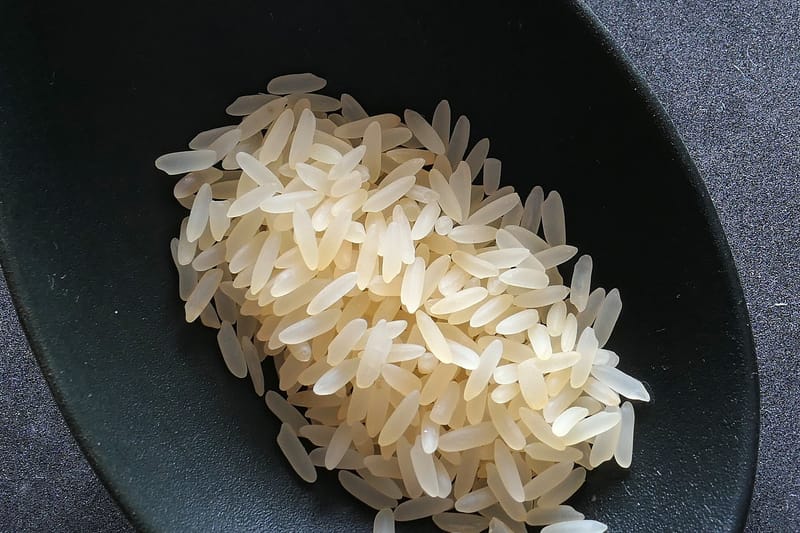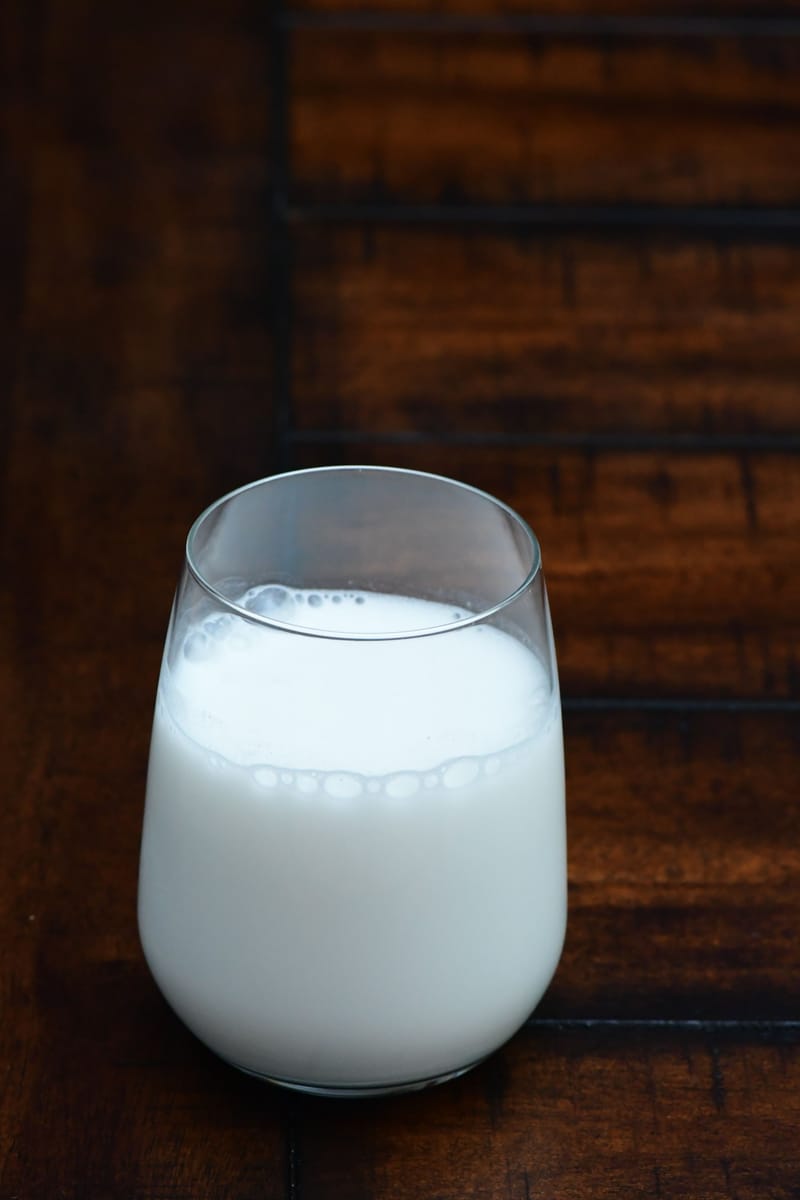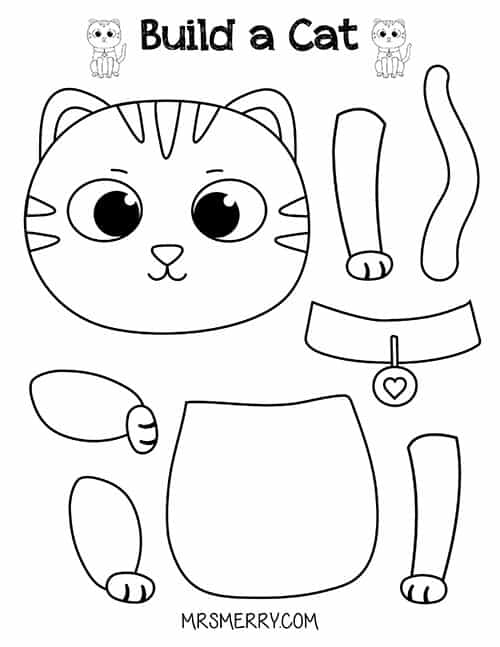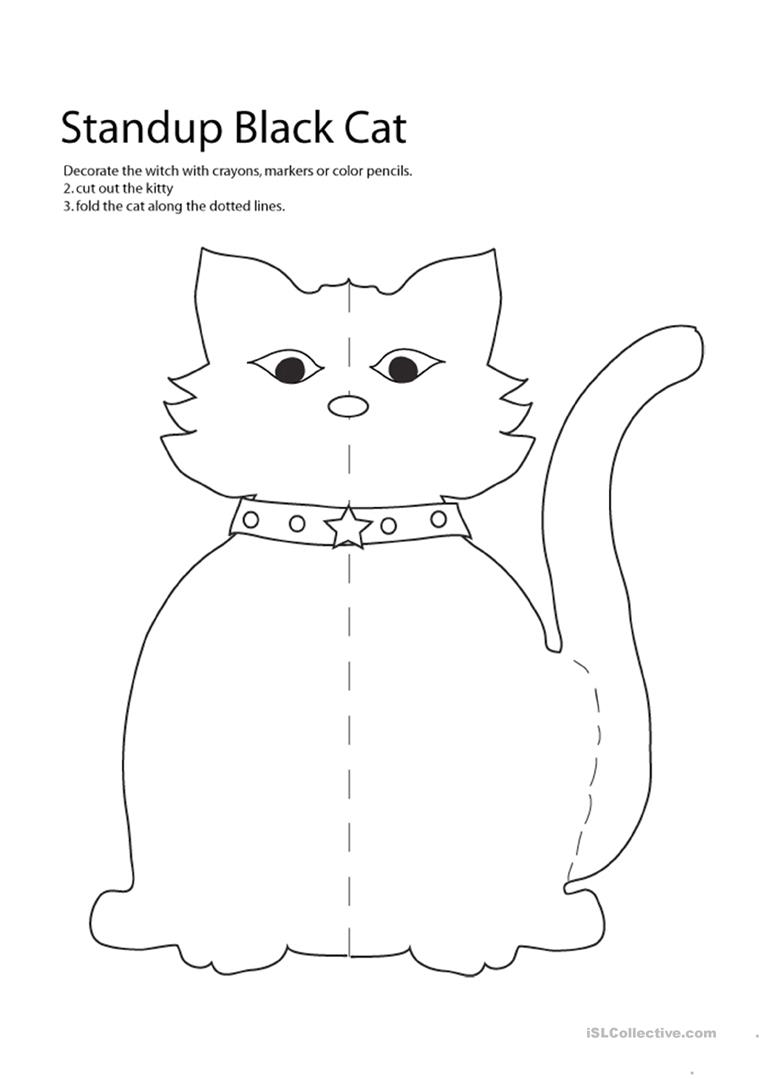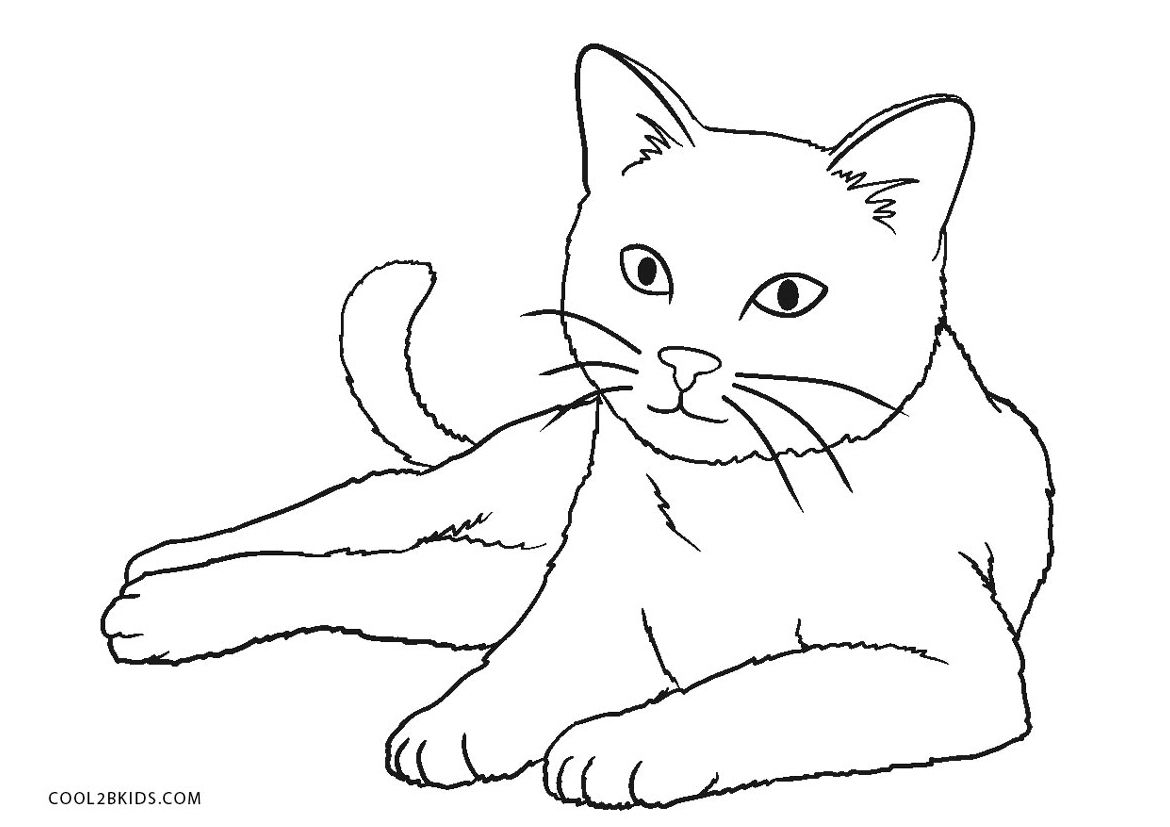Cat World
By Simba the Cat
Cats love this website, they get on the computer and go to this website when you are at work and school
Meowtastic!!!!!
If you like cats join here today its super easy just put your name, color, age, birthdate and if you like cats, you can have a grown up with you or you can do it by your self its free!!!!! Here is the URL for future come ins! 6120535b9e19b.site123.me
About cats

- Make friends with a cat by blinking slowly.
- One in 10 pet cats have separation anxiety.
- Your cat really does love you.
- Cats can tell when a thunderstorm is coming.
- Cats like boxes because they're cosy.
- Pet cats have an enormous impact on local wildlife.
- The oldest known pet cat existed 9,500 years ago. ...
- A cat was the Mayor of an Alaskan town for 20 years. ...
- The record for the longest cat ever is 48.5 inches. ...
- The richest cat in the world had ?7 million. ...
- Isaac Newton invented the cat door. ...
- In 1963 a cat went to space.
- While us humans have 206 bones, cats on average have 244. ...
- Adult cats have 30 teeth, while kittens have 26.
- A house cat is genetically 95.6% tiger.
- Cats can run around 48 kph (30 mph), but only over short distances. ...
- Cats can jump 5 times their height.
The History Of Cats

Grouping cats
------------------------------------------------------------------
Oldest living cats
#* 8 Oriental Short hair. ...
#* 7 Russian blue. ...
#* 6 Bombay. ...
#* 5 Sphinx. ...
#* 4 Persian. ...
#* 3 Balinese. ...
#* 2 Rag-doll.
#* 1 Burmese.
#* -------------------------------------------------------------
New cat breeds
#* Toy Ger.
#* Lu Poi.
#* American Curl.
#* Cheetos Cat.
#* La-Perm.
#* Napoleon Cat.
#* Ojos Azures.
#* Peter bald.
#* -----------------------------------------------------------
#* Cleanest cats
#* Sphinx
#* British Short-hair.
#* Russian Blue. ...
#* Scottish Fold. ...
#* Maine Coon.
#* ---------------------------------------------------------
#* Funnest cat breeds
#* Maine Coon. Big. ...
#* British Short-hair.
#* Bengal. ...
#* Munchkin. ...
#* Siamese. ...
#* Persian. ...
#* Rag-doll. ...
#* Scottish Fold.
#* --------------------------------------------------------
#* Best starter cats
#* Maine Coon.
#* Rag-doll. ...
#* Siamese. ...
#* Exotic Short-hair. ...
#* Scottish Fold. ...
#* Sphinx. ...
#* American Short-hair. ...
#* Adult rescue cat.
#* ---------------------------------------------------------
#* Smartest cats
#* 1 - Abyssinian
#* 2 - Siamese. ..
#* 3 - Bengal.
#* 4 - Burmese. ...
#* 5 - Cornish Rex. ...
#* 6 - Savannah. ...
#* 7 - Scottish Fold.
#* --------------------------------------------------------
##* Best looking cats
#* 8 Abyssinian.
#* 7 Br man.
#* 6 Toy Ger.
#* 5 Scottish Fold.
#* 4 Rag-doll.
#* 3 Maine Coon.
#* 2 Siamese Cat.
#* 1 Persian Cat.
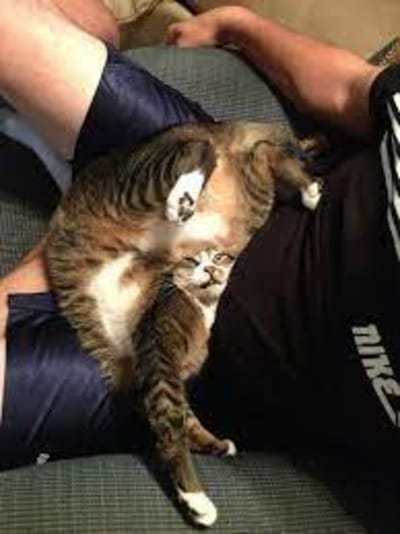
Cat breeds
The Persian cat is a long-haired breed of cat characterized by its round face and short muzzle. It is also known as the "Persian Longhair" in English-speaking countries. The first documented ancestors of Persian cats were imported into Italy from Persia around 1620.
The Maine Coon is a large domesticated cat breed. It has a distinctive physical appearance and valuable hunting skills. It is one of the oldest natural breeds in North America, specifically native to the US state of Maine, where it is the official state cat.
The Bengal cat is a domesticated cat breed created from hybrids of domestic cats, especially the spotted Egyptian Mau, with the Asian leopard cat. The breed name comes from the leopard cat's taxonomic name.
The British Shorthair is the pedigreed version of the traditional British domestic cat, with a distinctively stocky body, dense coat, and broad face. The most familiar colour variant is the "British Blue", with a solid grey-blue coat, orange eyes, and a medium-sized tail.
The Siamese cat is one of the first distinctly recognized breeds of Asian cat. Derived from the Wichianmat landrace, one of several varieties of cat native to Thailand, the original Siamese became one of the most popular breeds in Europe and North America in the 19th century.
The Sphynx cat, or simply Sphynx, is a breed of cat known for its lack of fur. Hairlessness in cats is a naturally occurring genetic mutation, and the Sphynx was developed through selective breeding of these animals, starting in the 1960s.
The Ragdoll is a cat breed with a color point coat and striking blue eyes. Their form is large and muscular and their coat is silky soft and semi-longhair. Ragdolls were developed by American breeder Ann Baker in the 1960s. They are best known for their docile and placid temperament and affectionate nature.
The Munchkin cat or Sausage cat is a relatively new breed of cat characterized by its very short legs, which are caused by genetic mutation. The Munchkin is considered to be the original breed of dwarf cat.
The Norwegian Forest cat is a breed of domestic cat originating in Northern Europe. This natural breed is adapted to a very cold climate, with a top coat of glossy, long, water-shedding hair and a woolly undercoat for insulation.
The Scottish Fold is a breed of domestic cat with a natural dominant-gene mutation that affects cartilage throughout the body, causing the ears to "fold", bending forward and down towards the front of the head, which gives the cat what is often described as an "owl-like" appearance.
The Savannah is a hybrid cat breed. It is a cross between a serval and a domestic cat.
The Siberian is a centuries-old landrace of domestic cat in Russia and recently developed as a formal breed with standards promulgated the world over since the late 1980s. Siberians vary from medium to medium-large in size.
The American Shorthair is a breed of domestic cat believed to be descended from European cats brought to North America by early settlers to protect valuable cargo from mice and rats. According to the Cat Fanciers' Association, in 2012, it was the seventh most popular pedigreed cat in the United States.
The Russian Blue Cat, commonly referred to as just Russian Blue, is a cat breed that comes in colors varying from a light shimmering silver to a darker, slate grey. Their short, dense coat, which stands out from the body, has been the hallmark of the Russian breed for more than a century.
The Exotic Shorthair is a breed of cat developed as a short-haired version of the Persian. The Exotic is similar to the Persian in many ways, including temperament and conformation, a flat nose and face with the exceptions of the short dense coat.
The Turkish Angora is a breed of domestic cat. Turkish Angoras are one of the ancient, natural breeds of cat, having originated in central Anatolia. The breed has been documented as early as the 17th century. The breed is also sometimes referred to as simply the Angora or Ankara cat.
The Himalayan, is a breed or sub-breed of long-haired cat similar in type to the Persian, with the exception of its blue eyes and its point colouration, which were derived from crossing the Persian with the Siamese.
The Birman, also called the "Sacred Cat of Burma", is a domestic cat breed. The Birman is a long-haired, colour-pointed cat distinguished by a silky coat, deep blue eyes, and contrasting white "gloves" on each paw. The breed name is derived from Birmanie, the French form of Burma.
The Abyssinian is a breed of domestic short-haired cat with a distinctive "ticked" tabby coat, in which individual hairs are banded with different colors. In nomenclature terms, they are also known as simply Abys. The breed is named for Abyssinia, where it is believed to have originated.
The Chartreux is a rare breed of cat from France, and is recognised by a number of registries around the world. The Chartreux is large and muscular with relatively short, fine-boned limbs, and very fast reflexes.
The Ragamuffin is a breed of domestic cat. It was once considered to be a variant of the Ragdoll cat but was established as a separate breed in 1994. Ragamuffins are notable for their friendly personalities and thick, rabbit-like fur.
The toyger is a breed of domestic cat, the result of breeding domestic shorthaired tabbies to make them resemble a "toy tiger", as its striped coat is reminiscent of the tiger's.
The Bombay cat is a type of short-haired cat developed by breeding sable Burmese and black American Shorthair cats, to produce a cat of mostly Burmese type, but with a sleek, panther-like black coat. Bombay is the name given to black cats of the Asian group.
The European Shorthair, called the European in FIFe and WCF is a cat breed originating in Sweden. The term has also been used as an elaborate way of referring to common domestic cats of Europe, causing some confusion as the pedigree cats of this breed also should resemble the typical domestic cats of Europe.
The Burmese cat is a breed of domestic cat, originating in Burma, believed to have its roots near the Thai-Burma border and developed in the United States and Britain. Most modern Burmese are descendants of one female cat called Wong Mau, which was brought from Burma to America in 1930 and bred with American Siamese.
The Oriental Shorthair is a breed of domestic cat that is developed from and closely related to the Siamese cat. It maintains the modern Siamese head and body type but appears in a wide range of coat colors and patterns.
The Manx cat is a breed of domestic cat originating on the Isle of Man, with a naturally occurring mutation that shortens the tail.
The Singapura is the smallest breed of cat, noted for its large eyes and ears, ticked coat, and blunt tail. Reportedly established from three "drain cats" imported from Singapore in the 1970s, it was later revealed that the cats were originally sent to Singapore from the US before they were exported back to the US.
The American Curl is a breed of cat characterized by its unusual ears, which curl back from the face toward the center of the back of the skull. An American Curl's ears should be handled carefully because rough handling may damage the cartilage in the ear.
The Somali cat is often described as a long-haired African cat, a product of a recessive gene in Abyssinian cats, though how the gene was introduced into the Abyssinian gene pool is unknown. It is believed that they originated from Somalia, a long lost cousin of the Abyssinian cat, which has origins in Ethiopia.
The kinkalow is a rare cat breed that originated in the United States. It is a hybrid between the American Curl and Munchkin gene.
The British Longhair is a medium-sized, semi-long-haired breed of domestic cat, originating in Great Britain.
The Van cat is a distinctive landrace of the domestic cat found in the Lake Van region of the Armenian Highlands. Van cats are relatively large, have a chalky white coat, sometimes with ruddy coloration on the head and hindquarters, and have blue or amber eyes or have heterochromia.
The Havana Brown was the result of a planned breeding between Siamese and domestic black cats, by a group of cat fanciers in England, in the 1950s. Early breeders introduced a Siamese type Russian Blue into their breeding. However, using current genetic testing, it is believed that almost none remain in the gene pool.
The Donskoy cat, also known as Don Sphynx or Russian Hairless, is a hairless cat breed of Russian origin. It is not related to the better-known Sphynx cat, also known as the Canadian Hairless, whose characteristic hairlessness is caused by a recessive mutation in the keratin 71 gene.
The Balinese is a long-haired breed of domestic cat with Siamese-style point coloration and sapphire-blue eyes.
The LaPerm is a breed of cat. A LaPerm's fur is curly, with the tightest curls being on the throat and on the base of the ears. LaPerms come in many colors and patterns. LaPerms generally have a very affectionate personality.
The Korat cat is a silver-tipped blue-grey, short-haired breed of domestic cat with a small to medium build and a low percentage of body fat. Its body is semi-cobby, and unusually heavy for its size.
A Cornish Rex is a breed of domestic cat. The Cornish Rex has no hair except for down. Most breeds of cat have three different types of hair in their coats: the outer fur or "guard hairs", a middle layer called the "awn hair"; and the down hair or undercoat, which is very fine and about 1 cm long.
The Ocicat is an all-domestic breed of cat which resembles a wild cat but has no wild DNA in its gene pool. The breed is unusual in that it is spotted like a wild cat but has the temperament of a domestic animal. It is named for its resemblance to the ocelot. The breed was established from the Siamese and Abyssinian.
The Thai or Wichien Maat is a newly renamed but old cat breed, related to but distinct from the Western, modern-style Siamese cat.
Tonkinese is a domestic cat breed produced by crossbreeding between the Siamese and Burmese. Members of the breed share many of their parents' distinctively lively, playful personality traits and are similarly distinguished by a pointed coat pattern in a variety of colors.
The Burmilla is a breed of domestic cat which originated in the United Kingdom in 1981. It is a cross between the Chinchilla Persian and Burmese cats. Standards were produced in 1984, and the breed gained championship status in the United Kingdom in the 1990s.
The Selkirk Rex is a breed of cat with highly curled hair.
The Cymric is a breed of domestic cat. Some cat registries consider the Cymric simply a semi-long-haired variety of the Manx breed, rather than a separate breed. Except for the length of fur, in all other respects the two varieties are the same, and kittens of either sort may appear in the same litter.
The Chausie is a domestic breed of cat that was developed by breeding a few individuals from the non-domestic species jungle cat to a far greater number of domestic cats. The Chausie was first recognized as a domestic breed by The International Cat Association in 1995.
The American Wirehair is a breed of domestic cat originating in upstate New York. As of 2017, though the breed is well-known, it is ranked as the most rare of the 41 Cat Fanciers' Association breeds.
The Lykoi is a natural mutation from a domestic shorthair that looks like the popular idea of a werewolf. The mutation has occurred in domestic cats over the last 20 years. DNA testing has been done by UC Davis to confirm that the cats do not carry the Sphynx/Devon Rex gene.
The Peterbald is a cat breed of Russian origin. It was created in St Petersburg in 1994 from an experimental breeding by Olga S. Mironova. They resemble Oriental Shorthairs with a hair-losing gene. The breed was accepted for Championship class competition in 2009.
The Oriental Longhair is a variety of domestic cat. It is closely related to the Oriental Shorthair. The Oriental Longhair in some registries, such as The International Cat Association, is a separate breed.
The Snowshoe is a breed of cat originating in the United States of America in the 1960s. Snowshoes were first produced in Philadelphia when a Siamese breeder's cat gave birth to three kittens with white feet.
Care

=== ❤️🐱Care🐱❤️ ===
#* Provide plenty of human companionship.
#* Provide regular, suitable meals with a constant supply of fresh water.
#* Provide a clean and comfortable bed.
#* Provide the cat with outdoor access or be prepared to empty and clean a litter tray on a daily basis.
#* Give your cat attention and toys for it to play with if not it will not be very happy
#* NEVER PUNISH OR GET MAD AT YOUR CAT OR BACK IT INTO A CORNER or else... he/she will hate you and think you are its enemy and defend its self from you and will hate you
------------------------------------------------------------------------------------------------------------------------------------
How to care for a pregnant cat
#* If your cat is showing signs of pregnancy or you suspect your cat may have mated while she was in heat, the first step is to take her to see the veterinarian. Sometimes, it is early enough that you can still spay your cat. It is difficult to confirm a pregnancy on a cat until they are about three to four weeks into their pregnancy. However, if your cat seems ill or is showing odd signs, you should still bring her to the vet for assessment and let the vet know she might be pregnant.
----------------------------------------------------------------------------------------------------------------------------------------
How to care for a sick cat
#* If your cat has diarrhea or increased thirst that means your cat is sick
#* Encourage your cat to eat small, frequent meals of a palatable, high energy, highly digestible food. Warming food to body temperature often makes it more appealing. Some sick cats can be encouraged to eat more by hand feeding. Your veterinarian will advise you if there are any foods that you should not offer.
-----------------------------------------------------------------------------------------------------------------------------------
Toothbrush
#* Place pet toothpaste on your finger and let them lick it off, then rub it on their gums as well. Place the toothpaste on a toothbrush and very gently brush a few teeth. Lift their lips to expose the front of their teeth. If your cat is okay with this, continue to brush all their teeth.
------------------------------------------------------------------------------------------------------------------------------------
Kitten Care
It is always recommended that you speak to the people you are adopting the kitten from to find out what the kitten has been fed. You may decide to feed a different diet, but any changes should be made slowly so, or risk upsetting your kitten’s tummy.
There are many premium brands of food specially made to meet the nutritional needs of a kitten. Your veterinarian can advise you on which brand they recommend.
Raw chicken necks two to three times a week are a good way to help maintain the health of your kitten’s teeth.
Note: Never give a kitten or cat cooked chicken bones as these are too brittle and can splinter and cause injury.
Kittens should not be fed dog food or table scraps.
HAPPINESS

#* Hang out. Install a perch indoors near a sunny window; padded perches can be purchased at many pet supply stores or through catalog retailers. Tree's company. Buy a ready-made cat tree (often called a "kitty condo"), or make your own. ...
Death

# If your cat is dying its time to say goodbye How to know if your cat is dying Lack of Interest In Eating and Drinking. It's common for cats to lose their appetite toward the end of their lives. ...
#* Extreme Weakness. You will notice your cat becoming more lethargic and refusing to move. ...
#* Lower Body Temperature. ...
#* Changes in Appearance and Smell. ...
#* Seeking Solitude.
Toxins and dangers

# This that are toxic to cats THAT YOU SHOULD NEVER EVER EVER EVER give to your cat
Food and Drugs
#* Alcohol.
#* Caffeine (coffee, soda, tea)
#* Chives.
#* Chocolate.
#* Garlic.
#* Grapes.
#* Onions.
#* Raisins
--------------------------------------------.
Medical
#* Antidepressants
#* Cancer medicines
#* Cold medicines
#* Diet pills
#* Pain relievers (acetaminophen, aspirin, ibuprofen)
#* Vitamins and other supplements
--------------------------------------------
Plants
#* Aloe
#* Azalea
#* Chrysanthemum
#* Hyacinths
#* Lily
#* Marijuana
#* Mistletoe
#* Rhododendron
#* Sago Palm
#* Tulip
---------------------------------------
More Dangers
#* Antifreeze
#* Bleach
#* Detergents
#* De-icing salts (which pets may walk through, then lick from their pads)
#* Dog flea and tick medication (pills, collars, spoot-on flea treatments, sprays, shampoos)
#* Fertilizers
#* Herbicides
#* Insect and rodent bait
#* Chicken bones
#* Dental floss, yarn, or string
#* Holiday decorations, including lights and tinsel
#* Toys with small or movable parts
Symptoms

#* Breathing problems
#* Confusion
#* Coughing
#* Depression
#* Diarrhea
#* Dilated pupils
#* Drinking more and urinating more
#* Upset stomach
#* A lot of saliva
#* Seizures
#* Shivering
#* Skin irritation
#* Tremors
#* Vomiting
#* Weakness
Training
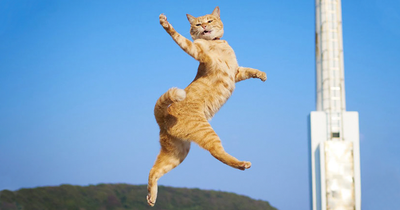
Avoid situations that you know make a cat aggressive. Separate cats that act aggressively toward each other and reintroduce slowly with positive reinforcement, as described in the Territorial Aggression section. Food treats are excellent positive enforcers of non-aggressive behavior.
To Use the toilet
Raise the height of the litter box gradually. Every time you raise the height of the litter box, remove a little. ...
Replace your litter box with a “training box”. Make sure the training box can hold your cat's weight. ...
Flush the toilet after each use by your cat
To Sleep with you
Provide toys that allow your cat to climb, crawl through, and explore, such as cat towers or tents. Just before bedtime, sit down with your kitty and engage with her for 10 to 15 minutes. That way, you'll tire her out and signal bedtime at the same time, helping establish that bedtime routine.
To Remember its Name
Make sure the cat links her name to the pleasant reward. This means saying her name, then immediately giving the reward.
Repeat this activity, calling the cat 10 to 20 times per session, once or twice a day until the cat reliably responds to its name.
Come on command
Develop a routine of letting them out at the same time every day and bringing them in at the same time every night. Do not let your cat stay outside at night. o Let them out before feeding time so that they can remember to come home… that's where the food is!
Crazy Topic on Cats
A Cats Whiskers
Whiskers are specifically tuned sensory equipment that guide a cat through daily functions. These specialized hairs aid vision and help a kitty navigate his environment, providing additional sensory input, much like antennae on insects. "Although whiskers are called “tactile hairs”, they don't actually feel anything."
A Cats Tongue
Cats love to groom themselves almost as much as they love to sleep, spending up to one-quarter of their waking hours cleaning their fur. The secret to their self-cleaning success? The spines on their tongues are curved and hollow-tipped, according to a paper published today in the journal PNAS. These tiny spines, called papillae, can transfer large amounts of saliva from mouth to fur, which not only cleanses Fluffy down to her skin but also lowers her body temperature as the saliva evaporates.
A Cats Paws
Your cat's paws are adapted to climbing and jumping, walking and running, and have protractible claws for self-defense and hunting. Cats have five toes in each of their front paws but only four in their hind paws. The innermost toes on the front paws function just like a human thumb when grasping objects.
A Cats Teeth
Cats are true carnivores so their teeth are highly evolved to help them to hunt, kill and eat prey. They are also an aid to self-defence and a tool for grooming. The tiny incisors at the front of their mouths are designed to grip prey while the sharp canine teeth (the fangs!) kill it and shred it. “Cats don't have horizontal tooth surfaces, so they don't develop dental cavities in the same way that people do,” Kornreich explains. Cats can get feline odontoclastic resorptive lesions (FORLs). These painful “cat cavities” occur at or below the gum line and are the result of tooth resorption, not decay| Fact: Did you know when a cat ages they end up swallowing old teeth or they just fall onto the floor? If you think a Lego is bad how about a sharp tooth?!?!?
A Cats Ears
The pinna is shaped to capture sound waves and funnel them through the ear canal to the eardrum. In cats, the pinnae are mobile and can move independently of each other. The ear canal of cats is deeper and more tapered than in people, creating a better funnel to carry sound to the eardrum.
A Cats Nose
Every cat nose has a unique pattern of bumps and ridges. Like fingerprints and snowflakes, no two cat noses are alike. Cats don't have many taste receptors, so their sense of smell plays a big part in stimulating their appetite. This is why many cats lose their appetite when they have a stuffy nose. A cat's sense of smell reveals all sorts of details about other animals in the area. Outdoor cats mark their territory with their eliminations, so if your cat goes outdoors, they can tell if anyone's been intruding in their space!
Warning

* Don't use or give anything that is not safe for your pet it will get them sick or even kill them so don't use or give any human stuff or foods to your pets and do not use arctic fox on your cats EVER!!!!!!!!! Use OPAWZ
Cat Laws
YOU MUST FOLLOW THEM OR ELSE!!!!!
NO NEUTERING OR SPAYING!!!!!!
How would you like it if you were spayed or neutered and you wanted babys!?!?! Unhappy right?!?!?! Same thing with us cats and dogs!!!!! What if I cut out your ovaries?!?!?!
GIVE US FOOD DAILY!!!!!
FEED ME!!!!!
NO MURDER!!!!!
No killing us cats or dogs!!!! What if we did that to you?!?!?!
WATCH WHERE YOU ARE GOING!!!!!
Do not hit us cats with cars! Do not steep on our tails! Do not steep on us in the middle of your floor! What if we steeped on you with our paws?
F.A.Q
Why do cats purr?
How long do cats live?
Why do cats knead?
Why do cats sleep so much?
More Questions coming soon
Cat World Movie
Video About Cats
Shocker
Cat Song 1
Cat Song 2
Funny Cats
About Simba
Name: Simba
Gender: Male
Age: 6
Phobias: Ophidiophobia fear of snakes, Aquaphobia fear of water, Phonophobia fear of loud sounds
Pattern: Lighting bolt patch on front left leg, white eye mark, white chest, green or blue eyes, white tail tip with orange stripes and long hair.
Coat, paw and nose color: Orange coat, Pink paws, Pink nose with black dot
Breed: Norwegian forest cat, Mane coon, Persian, European short hair
Fafrite things: His unicorn toy, Color green, Brand smartykat and friskies,
Cat GALLERY
Cat Jokes

2. What’s a cat’s favorite TV show? Claw and Order.
3. How did the Mom Cat know she was pregnant? Her test was pawsitive.
4. What normally happens when kitties go on a first date? They hiss.
5. What’s a cat’s favorite cereal? Mice crispies.
6. What color do kittens love the most? Purrple.
7. What does the cat say after making a joke? “Just kitten!”
8. When cats need to go to the airport, who do they call? A tabby.
9. Why did the cat have to go to an accountant? They got caught up in a purramid scheme.
10. What made the cat upgrade his phone? He wanted to finally get pawtrait mode.
11. Why are kittens actually excellent bosses? They have great littership.
12. What’s it called when all the treats are gone? A cat-astrophe.
13. Why did the teenage cat call her parents when she found an apartment she liked? She needed them to (cali)co-sign her lease.
14. What does a choir of cats like to sing? “Do-Re-Mew.”
15. Before going after a mouse, what did the dad cat say to his family? “Let us prey.”
16. What did the kitten have at their birthday party? A pounce house.
17. What do you call it when a cat is super-stylish? “Haute-cat-ture.”
18. Why did the kitty get an “A” on their English assignment? They properly used an independent claws.
19. When a cat doesn’t want to say goodbye, what do they say instead? “See ya litter!”
20. Why don’t you want to play Monopoly with a cat? They tend to be cheetahs.
21. What title does a cat go by in the kitchen? “The Whisker.”
22. What was the kitten bowling league called? “Alley Cats.”
23. Why is it hard to trust cats? They have many tall tails.
24. What did the cats do when they realized they had a bad plan? They decided to (cat)nip it in the bud.
25. Before a cat fight, what is usually said? “Hold my purrse.”
26. What do cats quote from the movie Bridesmaids? “Help me, I’m paw!”
27. What do cats look for in a significant other? A great purrsonality.
28. What do you call a cat who became a doctor? “A first aid kitten.”
29. What did the mom cat say about her intuition? “I just had a strong feline.”
30. Why was the teenage cat sent to his room? He was in a bad meowd.
31. What did one cat say while her friend was complaining? “Tail me about it.”
32. What do cats call a big pile of laundry? A meowtain to climb.
33. Why did the cat avoid eating lemons? They made him a sour-puss.
34. What song do kittens always request at dances? “Mice Mice Baby.”
35. Why are cats bad at making decisions? They become so purrplexed.
36. What’s a cat’s favorite sport? Hair ball.
37. Why do cats hate laptops? They don’t have a mouse.
38. How did one cat break up with another? She said, “We’re hisstory!”
39. Why don’t cats ever say “YOLO?” They have nine lives.
40. Which day of the week do cats love the most? Caturday.
41. Why do cats make horrible DJs? They always paws the tunes.
42. What did the mom and dad cat say about their wedding day? “It was unfurrgetable!”
43. What’s a kitten’s fave way to shop? By cat-alogue.
44. How did the cat comic know he was funny? The audience was meow-ling with laughter.
45. Why was the animal lover so untrustworthy? She kept letting the cat out of the bag!
46. What do cats call a nice dinner? “A fancy feast.”
47. What did the sick cat say? “I feel clawful!”
48. Why did some cat friends go to the mall? There was a buy-one-get-one-furry deal.
49. Where do cats enjoy spending a family day? The mew-seum.
50. What’s a kitten’s favorite kind of sticker? Scratch and sniff.
Cat world records
Swipe left or right to see all the cat world records!!!!!
The longest domestic cat living measures 120 cm (3 ft 11.2 in) and was achieved by Barivel (Italy), in Vigevano, Pavia, Italy, as verified on 22 May 2018. Barivel is a Maine Coon who, despite his size, is a very quiet and shy cat
Creme Puff (August 3, 1967 – August 6, 2005) was a domestic cat, owned by Jake Perry of Austin, Texas. She was the oldest cat ever recorded, according to the 2010 edition of Guinness World Records, when she died aged 38 years and 3 days.
The heaviest cat of all, for example, was Himmy, owned by Thomas Vyse (Australia), who weighed 21.3kg (46lb 15 ½ oz) when it died on 12th March 1986 at the age of 10 years 4 months
Eight-year-old feline is crowned the smartest cat in the world after performing 26 tricks in just sixty seconds! A clever kitty from Austria has been described as the smartest cat in the world after breaking the Guiness World Record for the most tricks performed by a cat in one minute
A cat in Los Angeles has earned a place in the record books for having the longest fur in the world. The fluffy feline known as Colonel Meow has hair reaching up to 22.87cm
Merlin, a rescue kitty from Torquay, Devon (UK) now has plenty to make a noise about after being confirmed as having the world record for Loudest purr by a domestic cat. ... At almost 70 decibels, Merlin's purr is as noisy as a conversation or an air conditioner and nearly as loud as a shower or even a dishwasher.
At the time, Arcturus Aldebaran Powers held the Guinness World Records mark for tallest domestic cat, measuring about 19 inches .
A tabby cat named Dusty , born 1935, of Bonham, Texas, USA produced 420 kittens during her breeding life. She gave birth to her last litter (a single kitten) on 12 June 1952.
Fizz Girl is of the Munchin Cat breed, in which cats are born with unusually short legs. ... She goes on to describe the cat as a 'princess' but also a very loyal and loveable companion. Though Tiffani has bred Munchkin Cats for years, she has never seen one quite as small as Fizz Girl.
This adorable rescue kitty is the queen of positivity (and cuteness), and has become one of the most beloved felines on the internet. In fact, Nala holds the Guinness World Record for having 4,215,466 followers – the most followers on Instagram for a cat!
The record for the longest whisker on a cat measured 19 cm (7.5 in) and belongs to Missi, a Maine coon who lives with her owner, Kaija Kyllönen.
The pair of cats shared a home in Farmington Hills, Michigan. They both were named Guinness World Record holders this fall -- Arcturus as the tallest domestic cat, measuring just over 19 inches, and Cygnus as the domestic cat with the world's longest tail, which measured at more than 17 inches.
When Ben Rea (UK) died in May 1988, he bequeathed his £7-million ($12.5-million) fortune to Blackie, the last surviving of the 15 cats he shared his mansion with. The millionaire antiques dealer and recluse refused to recognize his family in his will and split the majority of his wealth between three cat charities, with the instruction to look after his beloved pet. Rea also bequeathed small amounts of cash to his gardener, his mechanic and his plumber, and left a home to his friend Ken Randolph. His sister Dorothy, who died only a few day before him, also left £2.8 million (£5 million) to animal charities.
Grumpy Cat (real name Tardar Sauce) is the most popular cat on Facebook, with 8,759,819 likes as of 3 May 2017. The permanently sour-faced moggy (apparently caused by an underbite and feline dwarfism) became a hit after a photo and subsequent videos went viral online in 2012. She lives with her owner, Tabatha Bundesen, in Morristown, Arizona, USA.
The longest jump by a cat is 213.36 cm (7 ft) and was achieved by Waffle the Warrior Cat (USA), in Big Sur, California, USA, on 30 January 2018. Waffle the Warrior Cat is 10 years old.
Mr Bigglesworth from Austin Powers. This cat's name is almost as funny as his film appearance!
The oldest living cat siblings are Pika and Zippo (both UK, b. 1 March 2000), who have a combined age of 42 years 354 days, as verified on 25 August 2021. Pika and Zippo are twins. They are both black and white domestic shorthairs who have lived with the Teece family (Raymond, Brenda, Maurice, Raymond, Richard and Cydney - all UK) in Feltham, London, UK, for their entire lives.
“Catcerto” is a four-minute piano concerto for chamber orchestra and cat composed by Mindaugas Piecaitis (Lithuania). The piece – in which the orchestra accompanies a video recording of a cat pawing at notes on a piano – was debuted at the Klaipeda Concert Hall in Klaipeda, Lithuania, on 5 June 2009, with Nora the cat at the piano. Composer/conductor Piečaitis notated Nora’s melody from a video recording he had seen on YouTube then composed the orchestral accompaniment to match.
The cats that killed and saved lifes
-----------------------------------------------
The cats the saved lifes
2: Tara the hero cat that saved a 4 year old that was attacked by the neighbor's dog. Tara's Note "Do not get a dog they killed millions of people now"
3: According to a report by Metro UK, Diana Lorena Álvarez, the child's mother, checked the home's CCTV footage to figure out how her son had got out of his crib. What she found was the family's cat, named Gatubela, saving her child from what could have been a very dangerous fall.
4: Long live King Arthur, the domestic shorthair who sacrificed his own life to save his family's two children
5: But for one lucky toddler in Bucaramanga, Colombia, someone is always there to keep him safe: the family cat. Recently, the 1-year-old boy wanted to sneak a peek over his apartment balcony's railing. Perched nearby is his cat, looking out at the view.
6: Oreo, an adorable little cat from Orlando, Florida, was lauded a hero after saving his young human, Jaiden Peterson, from a diamondback rattlesnake, the most venomous species of snake in North America. According to LoveMeow, the little girl raised Oreo from when he was a kitten and the pair are the best of friends.
7: A cat named Masha has been hailed a hero in the Russian city of Obninsk, after being found with an abandoned baby. The boy, who is now being cared for in hospital, was found with a bag containing a change of clothes, nappies, and a bottle of baby milk.
8: When the bear first came into the yard Jack went after him and scared him up a tree. After fifteen minutes the bear finally got the balls to come back down, only to be chased up another tree minutes later. Finally, worried for the safety of their 15-pound-pussy Jack's owners called him back into the house and the bear went away. Not exactly New York news, but still, how cool is that cat?
9: The white, brown and gray tabby is credited with rescuing a couple by rousting them from sleep when fire broke out in their Wonder Lake home early Monday. But Baby disappeared after everyone escaped.
"She's an inside cat," said her co-owner, Josh Ornberg, adding that a live trap has been set near the house. "We'll find her."
Ornberg said Baby woke him and his longtime girlfriend, Letitia Kovalovsky -- seven months pregnant with twins -- as fire spread in their home in the 7600 block of Brook Drive.
10: Schnautzie was still just a kitten when she did something big—really big—for her owners. At about 2 a.m. on a cold night in October 2007, Schnautzie ambled up onto the chest of sleeping Trudy Guy and began tapping Guy's nose with her paw. The first time it happened, Guy ignored the adorable annoyance and went back to sleep. But Schnautzie was persistent: Tap. Tap. Tap.-------------------------------------------------------------------
The cat's that killed lifes
1: A cat killed a nine-month-old baby girl as she slept in her pram.
The girl's mum Snezhana came to check on her daughter Alexandra who she had left in the backyard of their home in Lipovetsky,
The 22-year-old approached the baby and saw that one of the family's pet cats was sitting on her face.
The feline jumped off the girl and out of the pram.
The girl had been asphyxiated and was not breathing.
2: Japanese police are looking into the attempted murder of an elderly, bedridden women, and their main suspect is a stray cat. Mayuko Matsumoto's daughter found her mother's face covered in blood from about 20 cuts on Monday in their home in Japan
3:Tragedy as woman is killed by her CAT named Minty - as doctors issue a dire warning to pet owners
Cat Myths

- All cats hate water. ...
- Cats are unloving, if you want a loving pet get a dog. ...
- Cats always land on their feet. ...
- Do cats have nine lives? ...
- Cats only purr when they are happy. ...
- Cats can see in complete darkness? ...
- Cats are nocturnal. ...
- You should give your cat cows' milk.
Cat Dictonery
Purr
A purr is a tonal fluttering sound made by some species of felids and two species of genets. It varies in loudness and tone among species and in the same animal. Felids are a family of mammals that belong to the order Carnivora and are informally known as cats.
Meow
A meow is a cat vocalization. Meows may have diverse tones and are sometimes chattered, murmured or whispered. Adult cats rarely meow to each other, so an adult cat meowing to human beings is probably a post-domestication extension of meowing by kittens; a call for attention.
Hiss
Contrary to popular belief, hissing is a normal way that cats express fear, not aggression or hatred. A hiss occurs “when a cat exhales a burst of air through the mouth, causing a noise that sounds similar to a snake hiss,” explains Dr. ... They will hiss when they feel threatened, fearful, or are upset about something.”
Yowl
A loud wailing cry, especially one of pain, distress or anger.
Growl
Growling is a low, guttural vocalization produced by animals as an aggressive warning but can also be found in other contexts such as playful behaviors or mating. Different animals will use growling in specific contexts as a form of communication.
Chitter
Make a twittering or chattering sound.
Chirrups
(especially of a small bird) make repeated short high-pitched sounds; twitter
Groom
Brush and clean the coat of (a horse, dog, or other animal). "you must be prepared to spend time grooming your dog"
Claws
A claw is a curved, pointed appendage found at the end of a toe or finger in most amniotes. Some invertebrates such as beetles and spiders have somewhat similar fine, hooked structures at the end of the leg or tarsus for gripping a surface as they walk.
Paws
A paw is the soft foot-like part of a mammal, generally a quadruped, that has claws.
Fur
Fur is a thick growth of hair that covers the skin of many different animals, particularly mammals. It consists of a combination of oily guard hair on top and thick underfur beneath. The guard hair keeps moisture from reaching the skin; the underfur acts as an insulating blanket that keeps the animal warm.
Whiskers
Whiskers, more generally called vibrissae, are a type of stiff, functional hair used by animals to sense their environment. These hairs are finely specialised for this purpose, whereas other types of hair are coarser as tactile sensors.
Snout
A snout is the protruding portion of an animal's face, consisting of its nose, mouth, and jaw. In many animals, the structure is called a muzzle, rostrum, or proboscis. The wet furless surface around the nostrils of the nose of some animals is called the rhinarium.
HairBall
A hairball (fur ball) is the unpleasant looking cigar-shaped wad of fur your cat might vomit up. It gets the tubular shape when hair gathers in your cat's esophagus. If the hair reaches the stomach, but doesn't leave the stomach, the material that is vomited may be more round in shape.
Cat
Cat Animal The cat is a domestic species of a small carnivorous mammal. It is the only domesticated species in the family Felidae and is often referred to as the domestic cat to distinguish it from the wild members of the family. Wikipedia Lifespan: 12 – 18 years (Domesticated) Gestation period: 58 – 67 days Heart rate between 120 and 160 per minute Pulse and/or Heart Rate Normal resting heart rates: Cats- between 120 and 160 per minute. Small dogs- between 100 and 140 per minute. Big dogs- between 60 to 100 beats per minute. Mating season Female cats reach sexual maturity and can breed from about 4 months old. They will then come into heat (or season) every year around February to October. Female cats have many short periods roughly 2-3 weeks apart. They do not ovulate until they are mated, so this period of heat cycles can be lengthy. Ear Anatomy A cat's ears, like those of other mammals, are made up of three structural areas: the outer ear, middle ear and inner ear. The outer ear consists of the external earflap (pinna), and the ear canal—a narrow tubular passage through which sound vibrations enter the ear from the outside environment. Background Thought to have descended from the African wildcat and used to catch vermin, the domestic cat can be traced all the way back to ancient Egypt 4,000 years ago (and perhaps beyond). By helping to reduce disease and protect crops, cats were quickly regarded as sacred creatures by the Egyptians.
Tail
The tail is the section at the rear end of certain kinds of animals’ bodies; in general, the term refers to a distinct, flexible appendage to the torso. It is the part of the body that corresponds roughly to the sacrum and coccyx in mammals, reptiles, and birds.
Cat Activity Centers



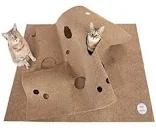


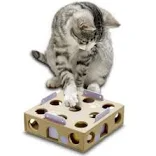

Cat Books
- A Street Cat Named Bob
- I Could Pee on This: And Other Poems by Cats
- How to Tell If Your Cat Is Plotting to Kill You
- Read All about Cats
- Cats!
- You Are Not a Cat!

A cat's wish list
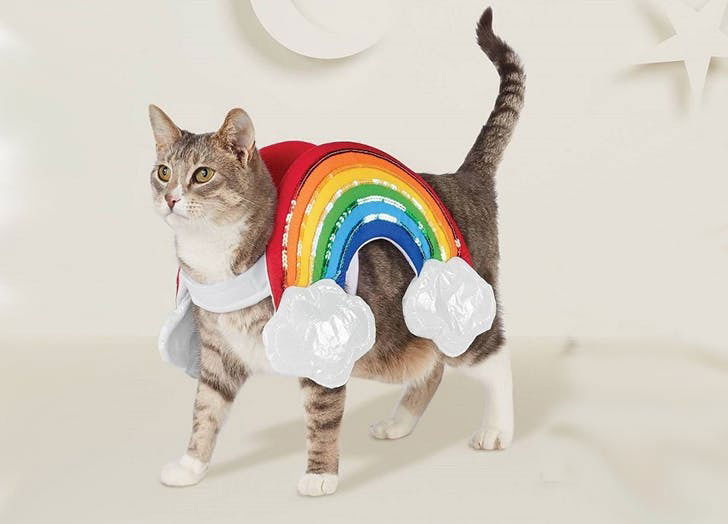
Toys that reflect light or appear to change in
Having a comfortable place
No loud noises
Not scolding them
Having a water bowl they want
Not teasing them
No declawing
Wanting to dress up
Colorful Cat litter
More colorful stuff
Updates
Updates Coming Soon
Cat Questions All Pages into their own
Recent Updates
Cat Jokes Cat Printables


